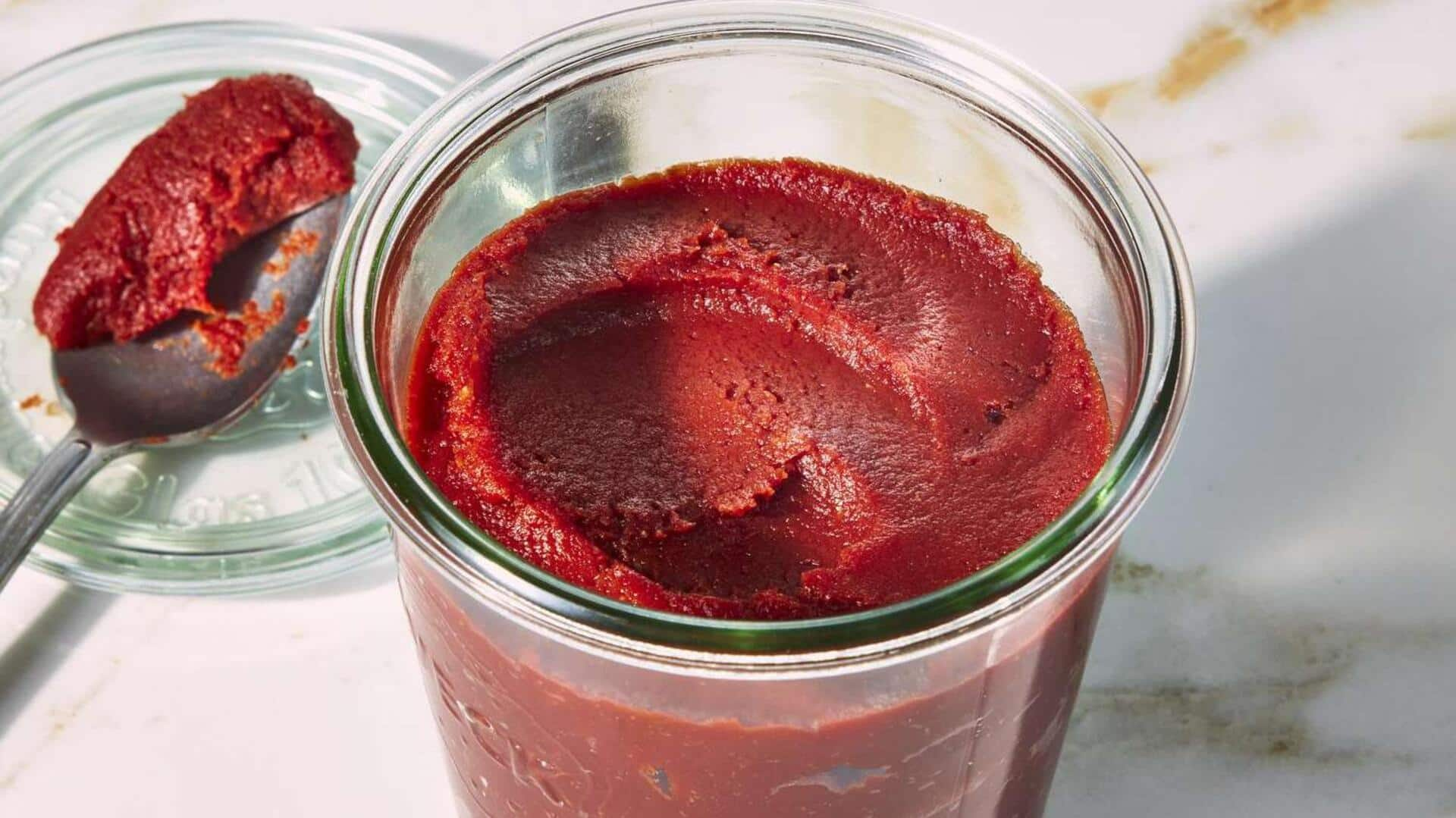
Make delicious tomato paste at home: Here's how
What's the story
Making tomato paste at home is a fulfilling experience, giving you complete control over the ingredients and flavors. This homemade version is often more delicious and healthier than the pre-packaged ones as it skips preservatives and artificial additives. With a few easy steps, you can turn fresh tomatoes into a rich paste that elevates your dishes. Here's how you can make tomato paste from scratch in your kitchen.
Tomato selection
Selecting the right tomatoes
Going for the right kind of tomatoes is key to making a good paste. Choose Roma or plum tomatoes since they have fewer seeds and lesser water, which is perfect for thickening into a paste. Make sure the tomatoes are ripe, but firm for the best flavor profile.
Preparation steps
Preparing tomatoes for cooking
Start by washing the tomatoes thoroughly under running water to get rid of any dirt or pesticides. Quarter them and remove any stems or blemishes. If you want, you can peel off the skin by blanching them in boiling water for about a minute before transferring them to an ice bath.
Cooking process
Cooking down tomatoes
Place the prepared tomatoes in a large pot over medium heat and let them simmer gently. Stir the mixture occasionally, to make sure the tomatoes break down completely and release their juices. This important process usually takes anywhere between 30 minutes to one hour, depending on how many tomatoes you have and what heat you're working on.
Straining process
Straining and reducing mixture
Once cooked down, pass the mixture through a fine sieve or food mill to separate seeds and skins from pulp. Return the strained pulp back into the pot over low heat. Continue cooking until it reduces by half its volume, stirring frequently so it doesn't stick or burn.
Storage tips
Storing your homemade paste
After achieving the desired consistency, let cool before transferring into sterilized jars or airtight containers, leaving some space at the top if freezing. For later use, store within three months when refrigerated and up to six months when frozen, without losing quality, taste, or freshness throughout the duration of the storage period.